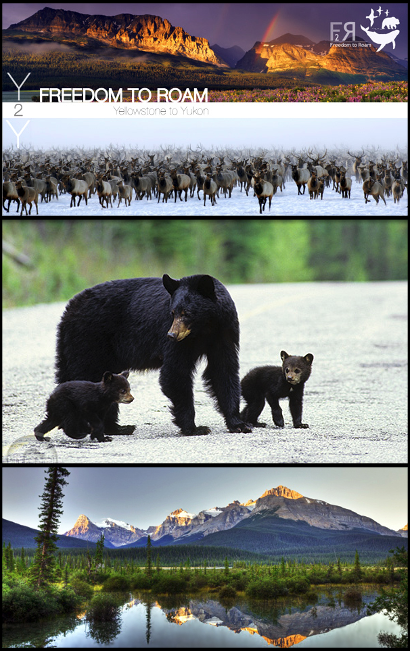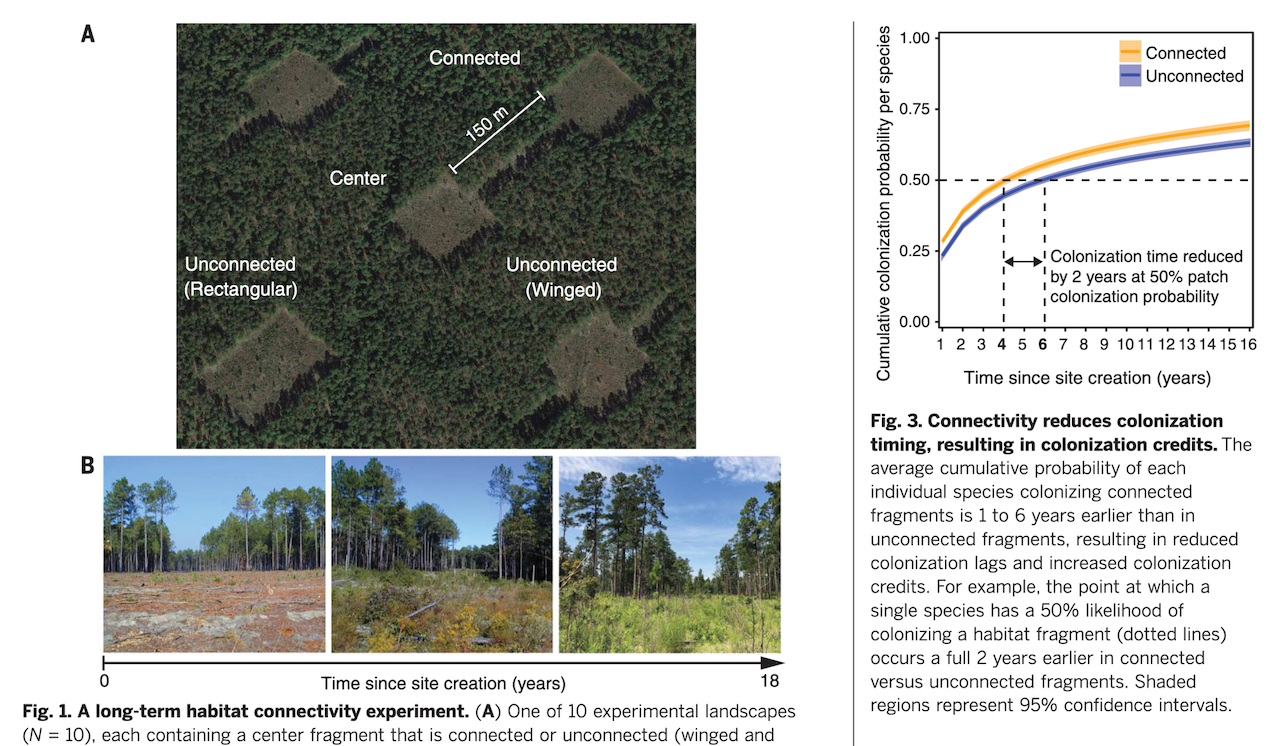Landscape Ecology
Daijiang Li
LSU
Announcements
A landscape is a heterogeneous area consisting of distinct patches (landscape elements) organized into a mosaic-like pattern
A mosaic is the patchwork of different types of land cover/elements (e.g., forests, bogs, meadows, lakes, streams, etc.)
Landscape Ecology
The study of the causes & consequences of landscape-level (i.e., intermediate- to large-scale) ecological patterns
- The causes behind the formation of patches and boundaries, and
- The ecological consequences of these spatial patterns on the landscape
Landscape Ecology
Is concerned with spatial patterns in the landscape and how they develop, with an emphasis on the role of disturbance
Is a relatively new branch of ecology
Goal: Predict the responses of different organisms to changes in landscape
Landscape Ecology is the science and art of studying and influencing the relationships between spatial pattern and ecological processes across hierachical levels of biological organization and different scales in space and time
Wu and Hobbs, 2007
Importance of scale
Landscape ecologists often grapple with issues associated with spatial scale
Two important aspect of spatial scale: grain and extent
Grain refers to the spatial resolution of a study or data set; e.g., are the data or samples obtained at a resolution of 1 m2, 100 m2 or 1 km2?

Importance of scale
Landscape ecologists often grapple with issues associated with spatial scale
Two important aspect of spatial scale: grain and extent
Grain refers to the spatial resolution of a study or data set; e.g., are the data or samples obtained at a resolution of 1 m2, 100 m2 or 1 km2?
Extent refers to the size of the study area being considered; e.g., is the landscape small or large?
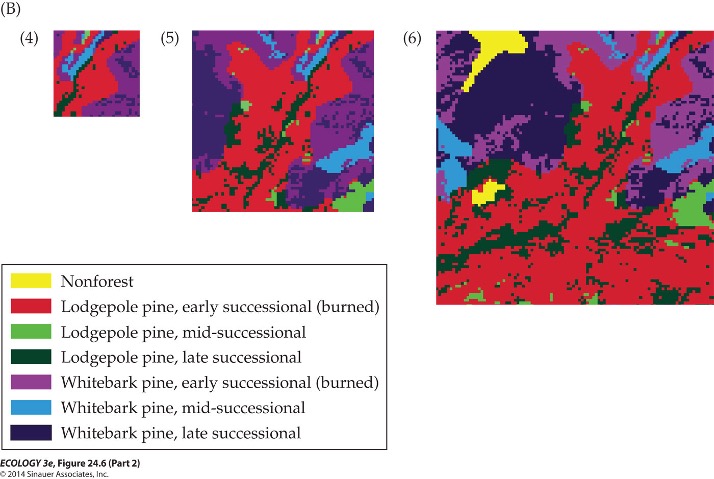
Importance of scale
Landscape ecologists often grapple with issues associated with spatial scale
Two important aspect of spatial scale: grain and extent
Grain refers to the spatial resolution of a study or data set; e.g., are the data or samples obtained at a resolution of 1 m2, 100 m2 or 1 km2?
Extent refers to the size of the study area being considered; e.g., is the landscape small or large?
No fixed scale, either grain or extent, unambiguously identifies landscape ecology (a landscape ecological approach can also be applied to a very small area with fine resolution)
Landscape Structure
Landscape structure: the physical configuration of landscape elements, e.g., patch size distributions, patch dispersion, patch shapes, patch connectivity / isolation, etc.
Patches in the Landscape
- Patches: relatively homogenous community types that differ from their surroundings in structure (e.g., size, shape) and in species composition
- Patches result from factors: geology, topography, soils, and climate, human activity
- The area, shape, and orientation of the landscape patches influence:
- Habitat suitability
- Wind flow
- Dispersal of seeds
- Movement of animals
E.g., Lodgepole pine stand age classes (stand ages since last major fire-disturbance) in Yellowstone National Park
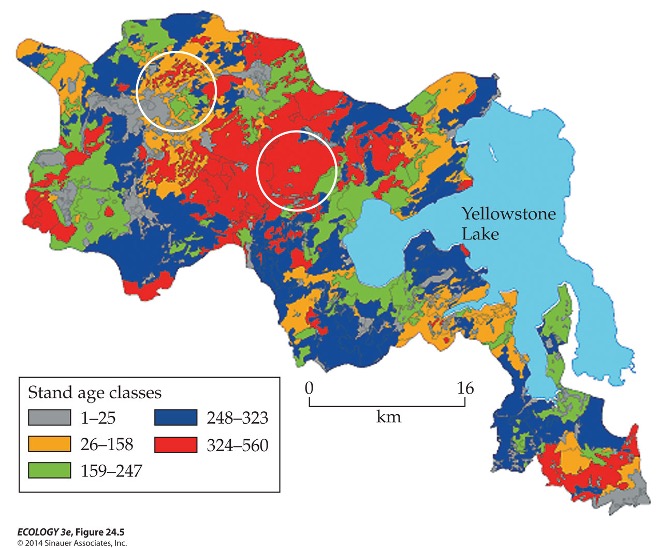
Patches have edges
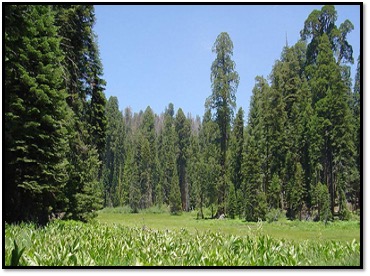
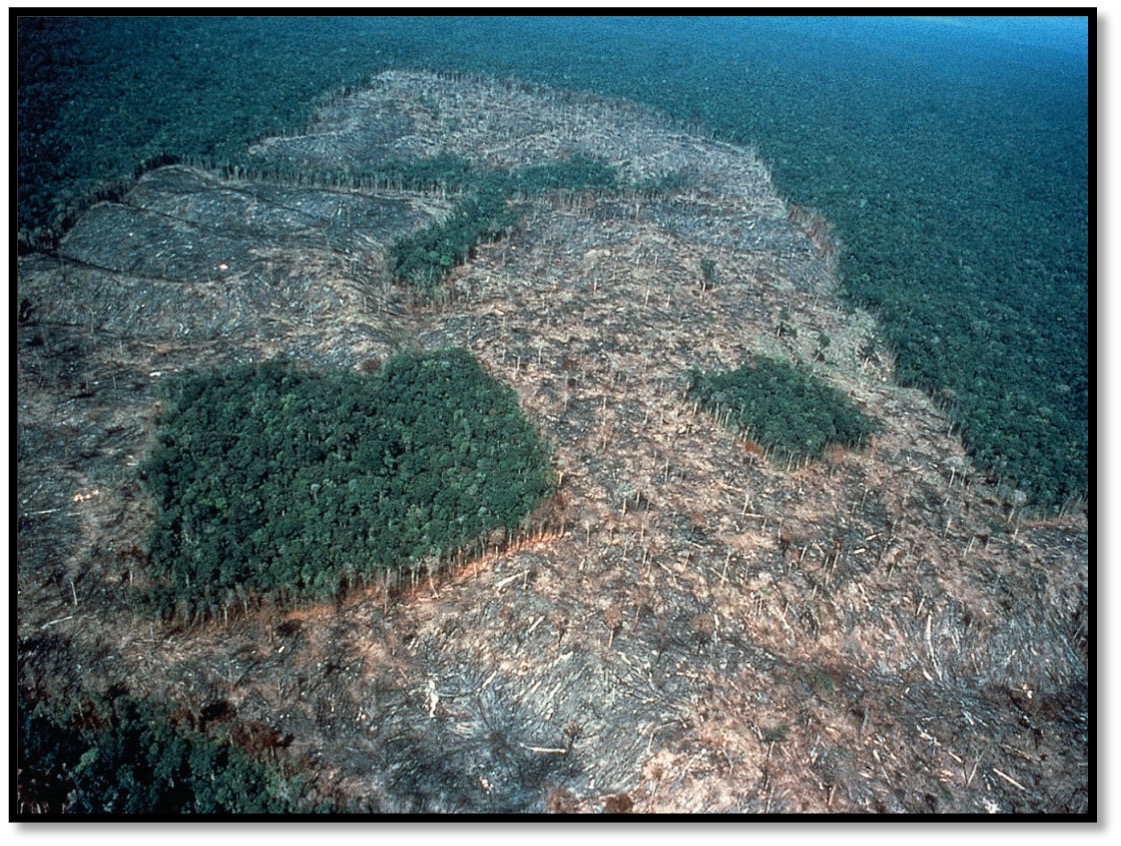
Some pathces are stable and permanent (inherent edges) while others are subject to successional changes over time (induced edges)
Inherent edges: Natural edges, caused by changes in soil, topography. E.g., eastern North America – deciduous, coniferous edge
Induced edges: May occur where floods or fires have reversed succession. May occur where humans have created patchwork of tilled land interspersed with fence rows and wood lots
Patches have edges
The height, width, and porosity of borders influence the gradients of wind flow, moisture, temperature, and solar radiation between adjoining patches
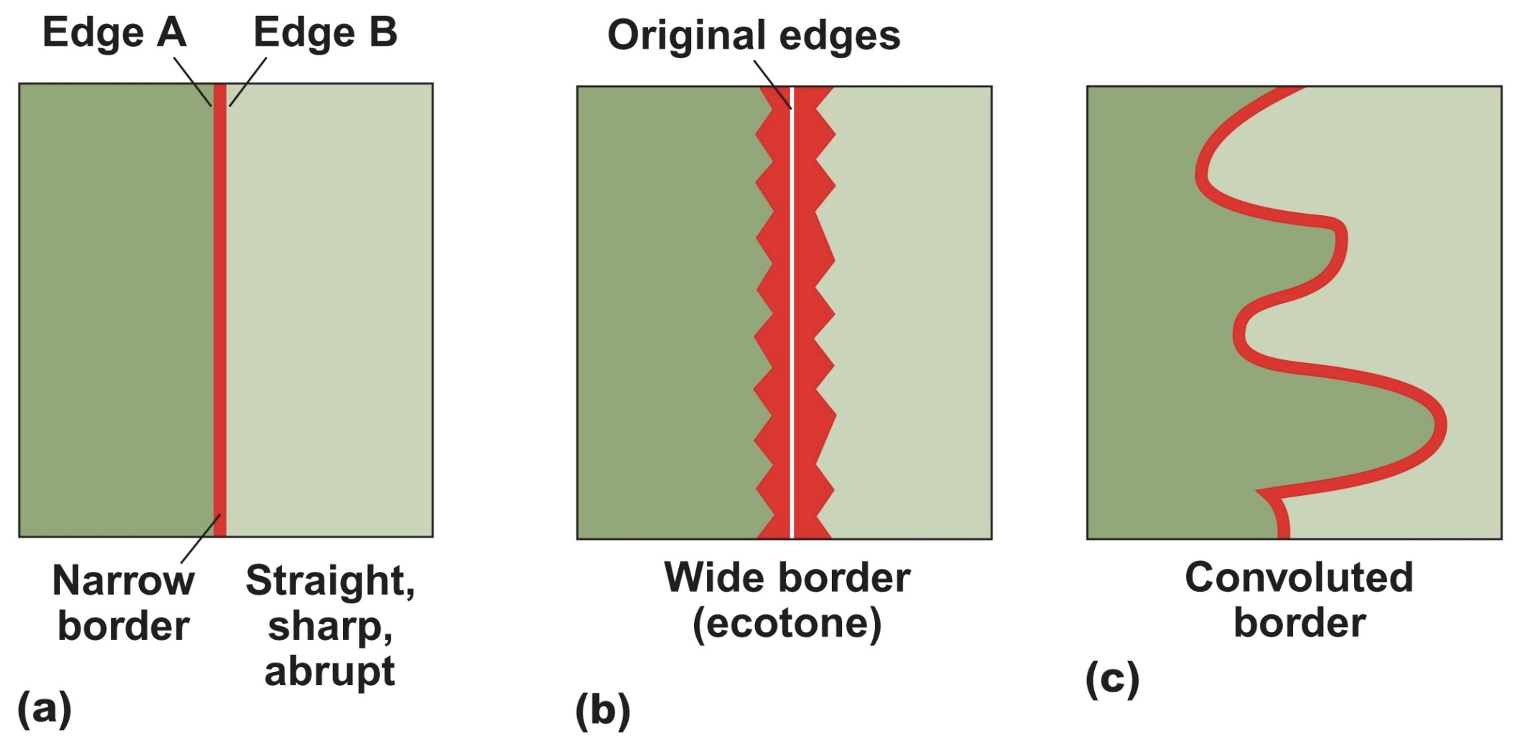
Edge effects: negative (generally) effects of a habitat edge on interior conditions
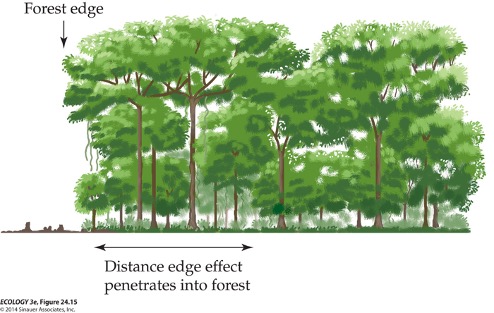
Edge effects: negative (generally) effects of a habitat edge on interior conditions
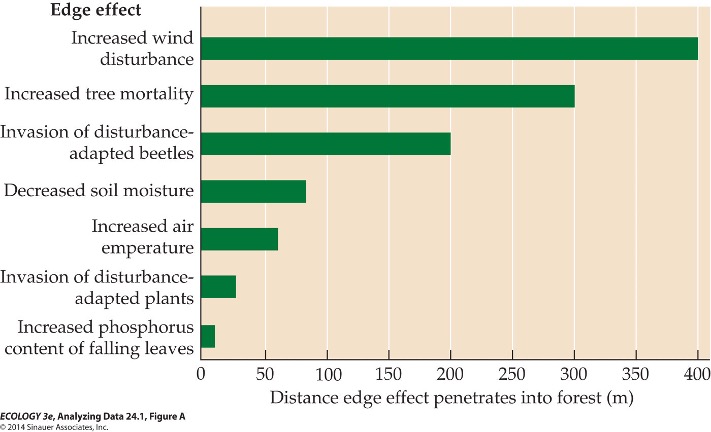
Some species can only inhabit the interior or core, and some are specifically attracted to the edge
Edge species are restricted exclusively to the edge environment (e.g. Indigo bunting)
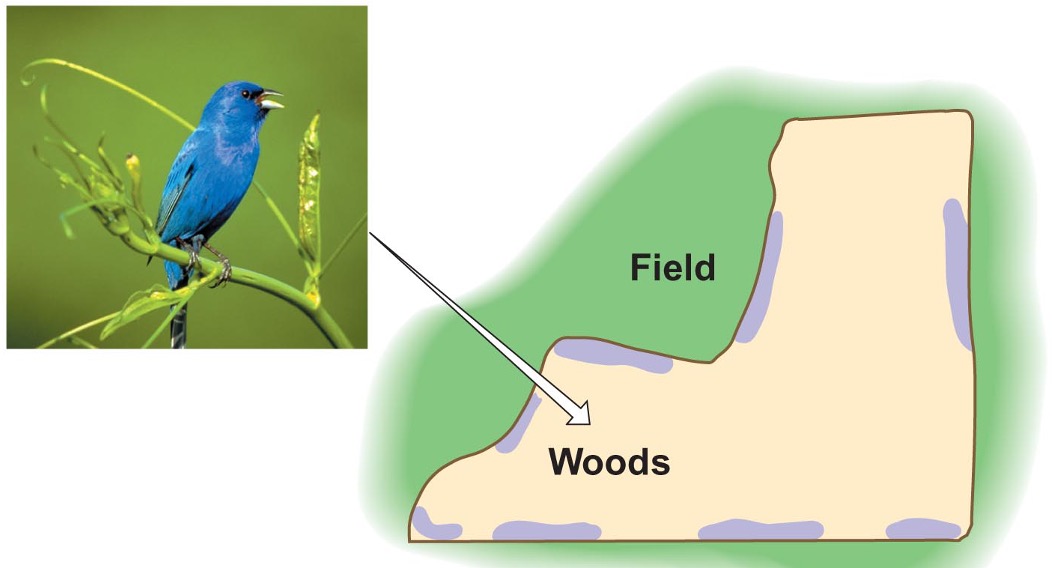
Edge species
Interior species
Area-insensitive species
The edge effect can also create problems: attracts more predator; restricts dispersal, etc.
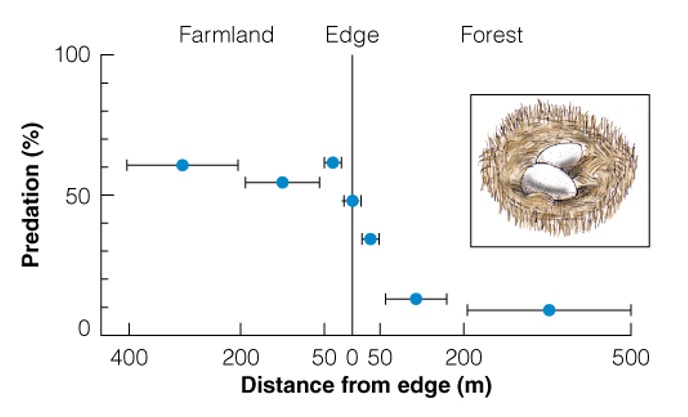
Two patches with same area
The shape of a habitat reserve matters! As patches become SMALLER, they become LARGELY EDGE, losing the characteristics of the interior community, e.g., Brown-headed cowbird
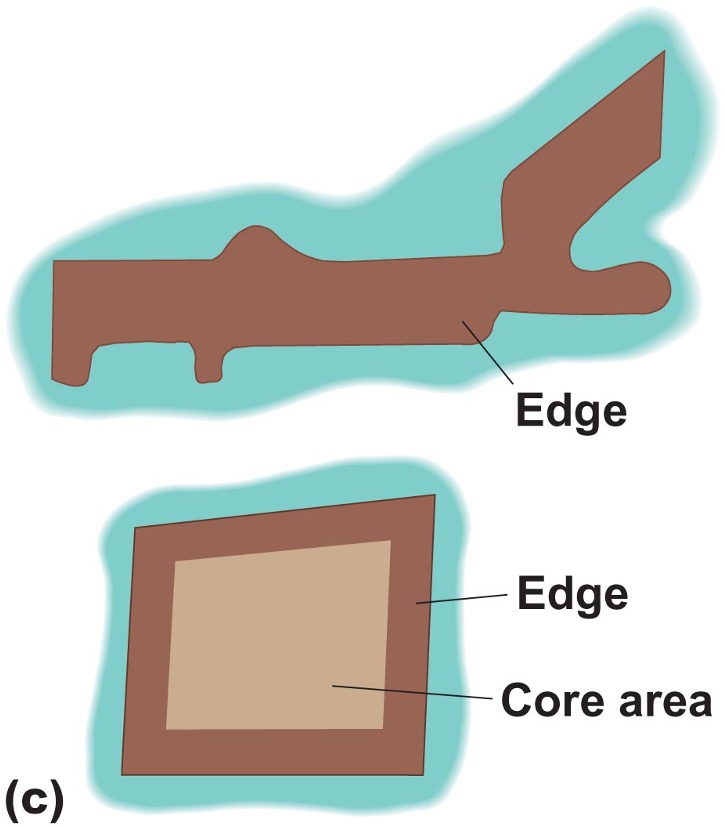
Habitat Loss & Fragmentation
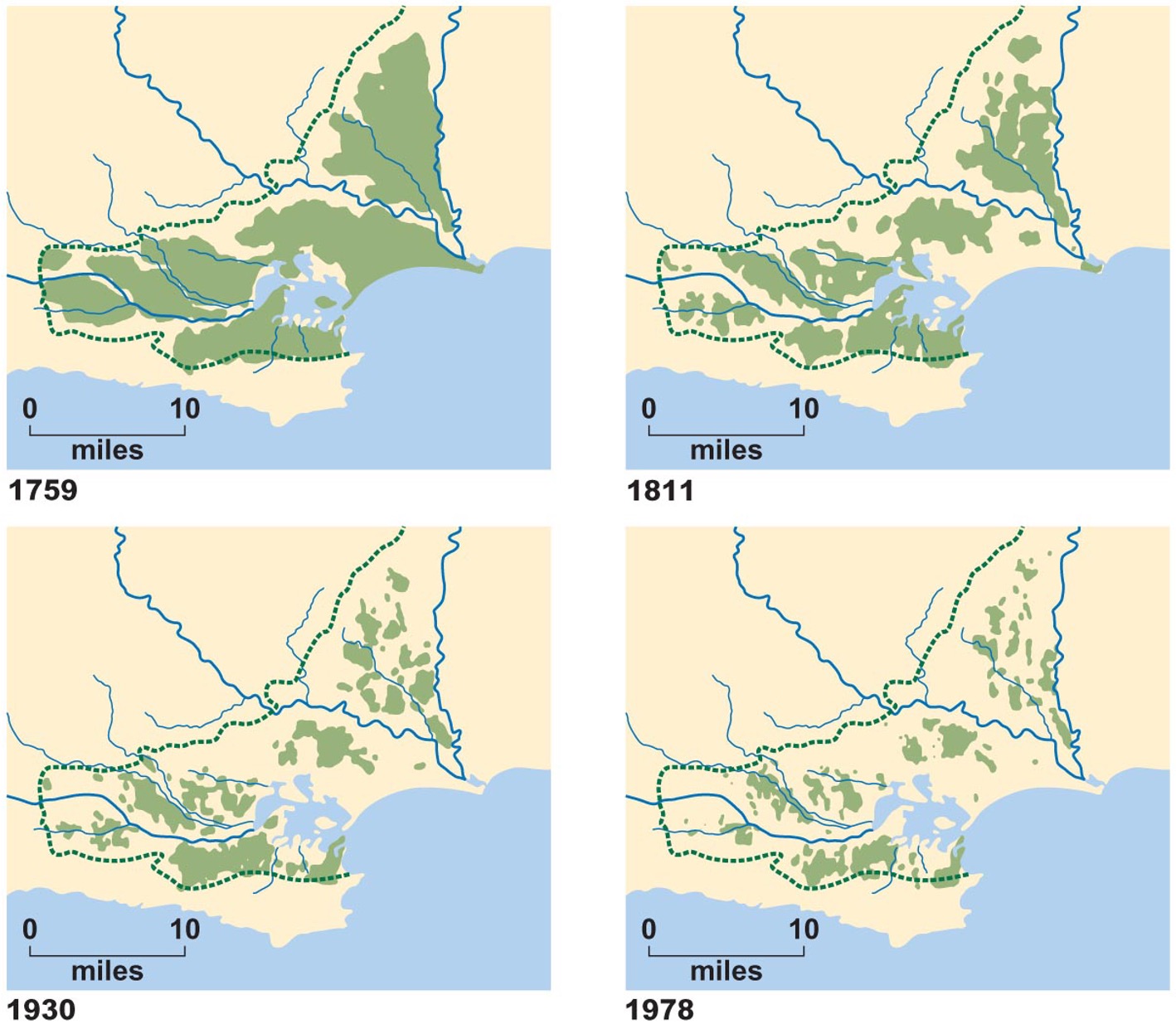
86% of habitat lost of heathland (in England)
Fragmentation and isolation of heathland (in England) 40,000 ha to 6000 ha in 218 years
1759: 10 large blocks
1978: 1084 pieces
86% of habitat lost.
Habitat Loss & Fragmentation
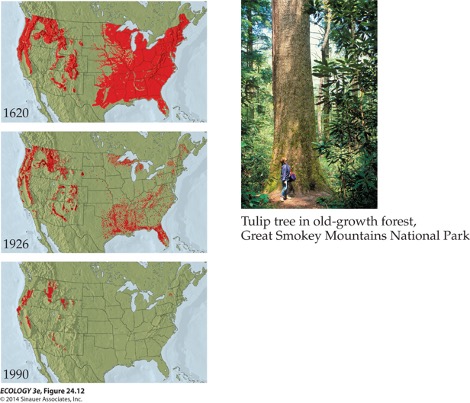
Loss & fragmentation of U. S. old-growth forests
Habitat Loss & Fragmentation
The primary cause of loss of biological diversity
Loss of habitat
Reduced population size
Loss of genetic variation
Increased edge
Design Principles for Protected Areas
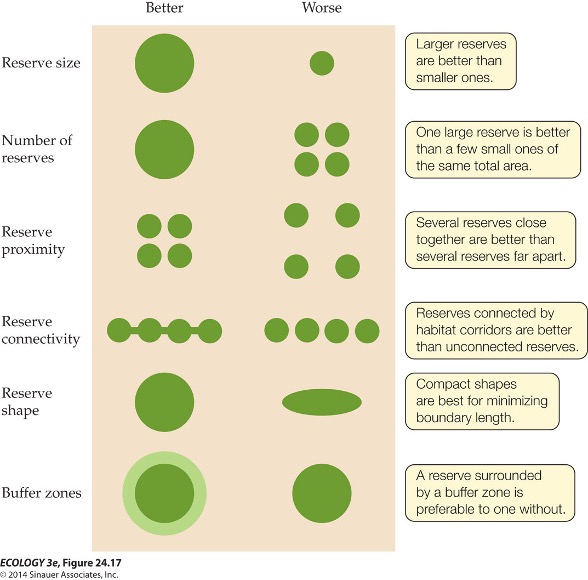
The SLOSS Debate
If only a limited amount of habitat can be protected in parks and reserves, which strategy is better: a Single Large reserve Or Several Small reserves (SLOSS)?
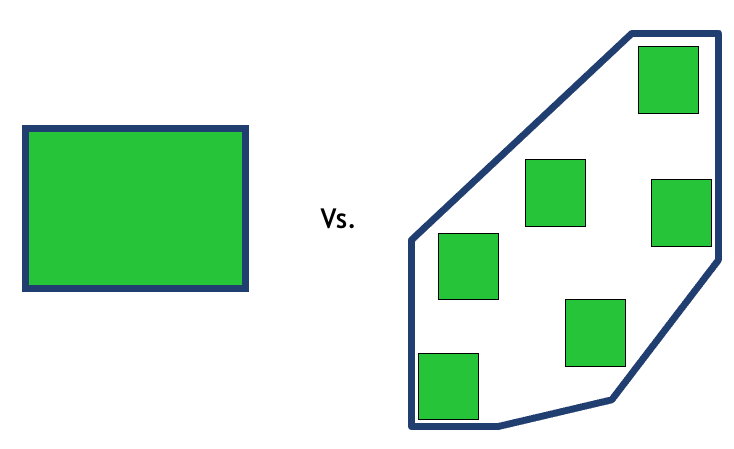
The SLOSS Debate
Several small is better
Ecological Responses to Habitat Fragmentation Per Se
Why do several small patches hold more species than few large patches?
Several small is not better
Is habitat fragmentation good for biodiversity?
Connectivity and Corridors
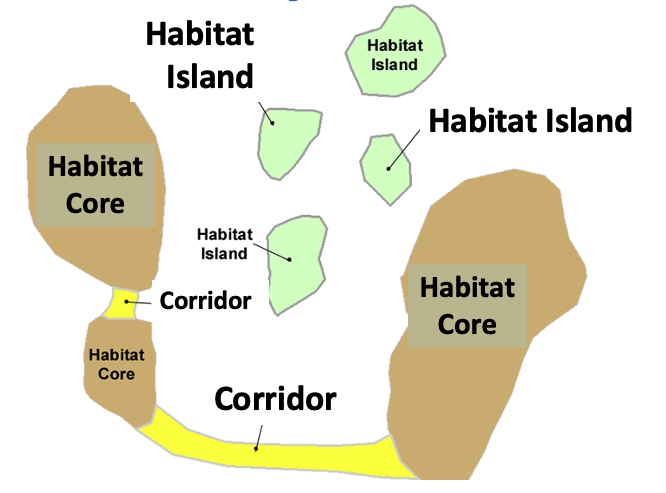
The importance of corridors in fragmented landscapes
Corridors Permit Movement: gene flow, reestablish species (rescue effect) etc.
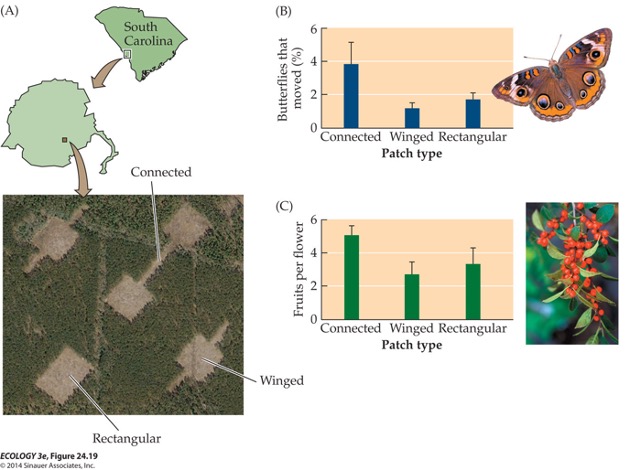
Negative impacts of corridors
Scouting positions for predators
Disease spread
Pathway for the invasion of exotic species
If too narrow, can inhibit movement of social groups
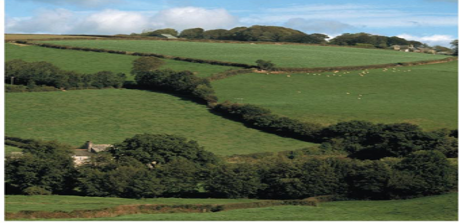
Yellowstone 2 Yukon https://y2y.net/
Strategy is based on conservation requirements of grizzly bears.
Secondary focus on bird & fish species.
Priority areas: core wildlife habitat OR key corridors connecting core areas
Work with scientists, agencies, Aboriginal communities, land trusts, & some businesses.
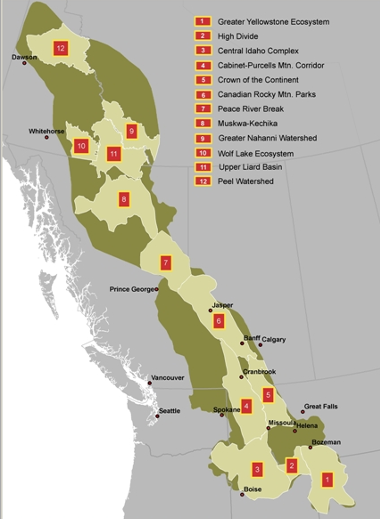
Yellowstone 2 Yukon
Does Y2Y want the entire region to become a protected area or park?
No. Y2Y's vision is that the Y2Y region will be managed so that this world-renowned mountain ecosystem and its inhabitants (wild & human) remain healthy and connected for centuries to come.
This requires that wild animals are able to travel safely through land adjacent to and between parks.
